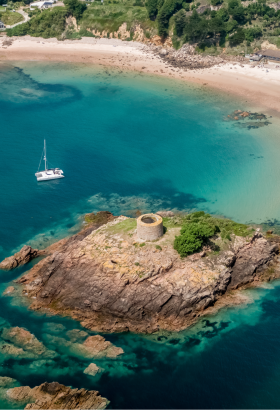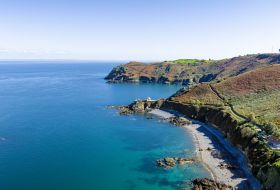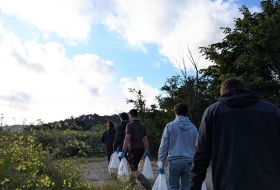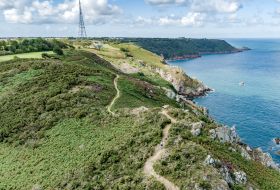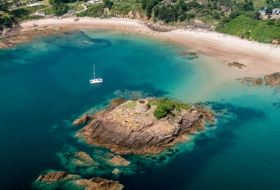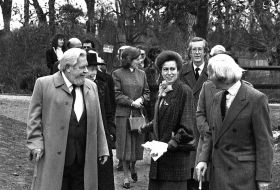‘Life after Liberation: the road to recovery’ will share the story of the years that followed the joyous celebrations on 9 May 1945 and the challenges and opportunities the Island faced at the end of five long years of German Occupation.
The new exhibition, which is kindly sponsored by Benest & Syvret, opens in the Barreau Le Maistre Gallery on the second-floor of Jersey Museum in time for the week of Liberation 80. Entry is free and the exhibition will run until the end of the year.
Lucy Layton, Jersey Heritage’s Exhibitions Curator, said: “Liberation Day is such an important day to celebrate in Jersey but those who experienced it on 9 May 1945 would have had mixed emotions. They had survived five long years of Occupation and many had lost loved ones in the war. ‘Life after Liberation’ aims to capture the joy and melancholy of the day itself before taking people on a journey through the years that followed Liberation, and all the challenges and opportunities that faced Islanders, from official visits and the 90-day military rule by British troops, to the divisions between those who stayed and left, economic and social issues, and ultimately the much longer-term impact of the Occupation on our Island. We think of Liberation Day as the end of the Island’s Occupation story but it was only the first chapter in the Island’s long road to recovery.”
‘Life after Liberation’ starts by sharing some incredible colour footage filmed on 9 May 1945 and a specially-commissioned soundscape created by local composer Emily de Gruchy. It moves on to the official narrative of the Occupation, as told through a Ministry of Information documentary filmed in late May 1945, visiting British dignitaries and a Royal Visit. This section also covers the 90-day military rule by British troops from Force 135, who had the enormous task of preparing the Island for a return to civilian life.
The exhibition looks at the divisions created by the Occupation years and fuelled by the different experiences of Islanders, whether they remained in the Island, were deported by the German authorities, or left as evacuees. It then shares the story of how Jersey began to pick up the pieces of post-war life. The road to recovery included economic problems, ranging from a huge national debt to the shortage of accommodation and teachers, as well as a desire for political reform, and the need to get the tourism industry open for the 1946 visitor season.
The final section of the exhibition is about the long shadow of war and how stories from this momentous time in the Island’s history have been kept alive over the decades, including how Liberation Day itself has been marked over the years. It also looks at the environmental impact of the Occupation, much of which is visible today.
A host of objects from the Jersey Heritage collections have been used to illustrate the exhibition, ranging from paintings and medals to archive records. On display for the first time will be one of the piles of unwanted German Reichsmarks that were exchanged by Islanders for Sterling and were kept in the vaults of the States Treasury for almost 80 years before being transferred to Jersey Archive last year. The journal of Major Frank Sargent, who directed the military clear up operation, will also be on display, as well as Islander Joan Coles’ original diary, which she wrote while in Wurzach internment camp in Germany. This is on loan from the Société Jersiaise.
Members of the community and the Channel Islands Occupation Society have also loaned items for the exhibition, including a handmade rosette worn by a young Islander on 9 May 1945; a German flag that was torn down from the flagpole of the Pomme D’Or Hotel on Liberation Day; and a leaflet from the Underground Hospital, which opened to visitors on 9 May 1946.
Advocate Nina Benest, of Benest & Syvret, said: “Benest & Syvret are delighted to sponsor the Liberation 80 exhibition which tells the story of the Island’s post-war recovery. This is a wonderful opportunity for Islanders and visitors to understand the challenges faced by Jersey following its Liberation, this is a period in history which is sometimes overlooked. We as a firm are proud of our local connections and it gives us enormous pleasure to support Jersey Heritage in this way.”

